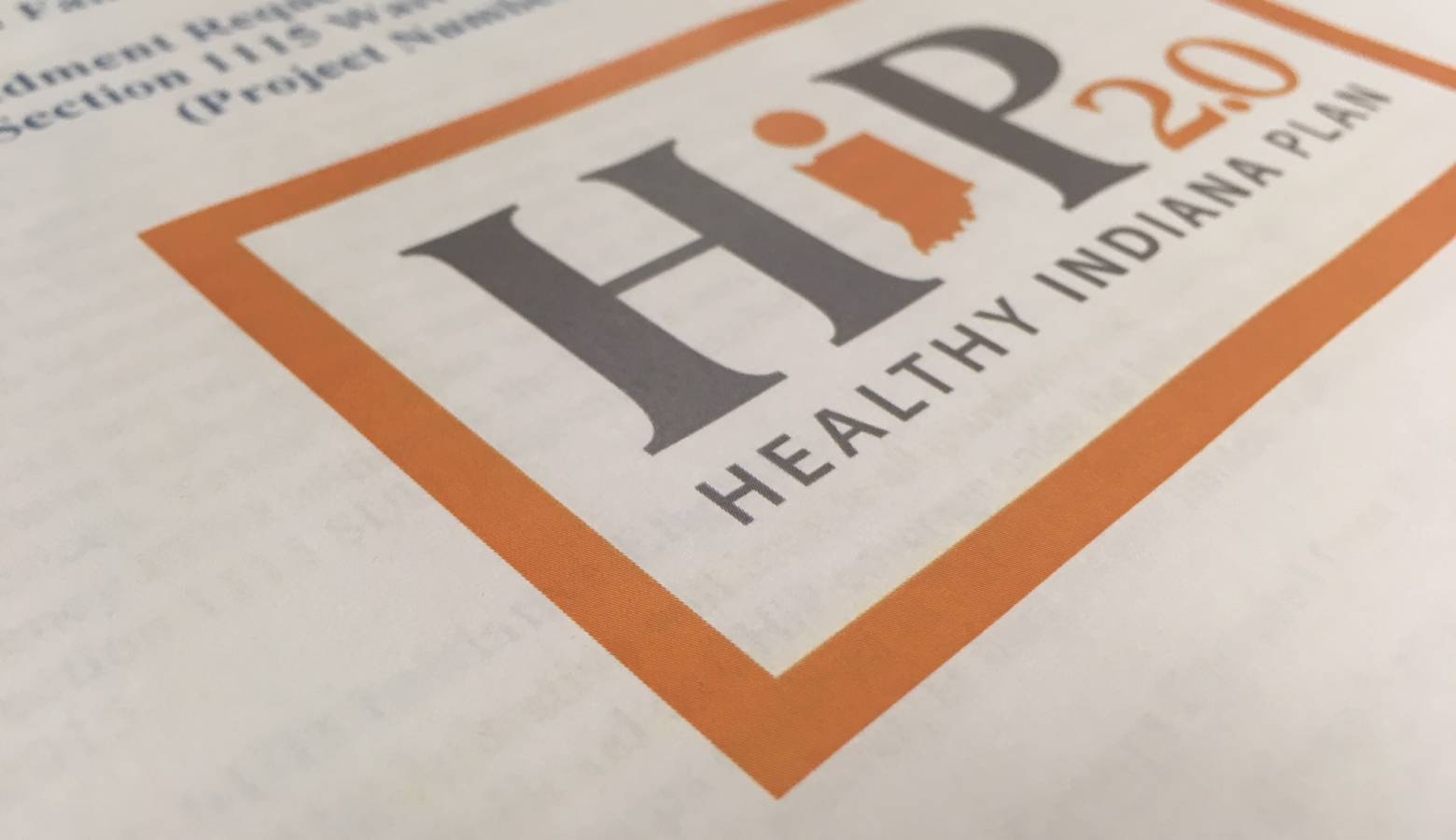HIP Replacement: A Guide To The New Changes To Indiana’s Medicaid

Indiana’s Medicaid program got an update on Feb. 2 when the federal government approved a new version of the Healthy Indiana Plan.
The new changes became effective Feb. 1.
The Medicaid expansion program, which launched in 2015 and extended coverage to about 240,000 low-income adults in the state, included some unique features that differ from other states’ Medicaid programs.
Because Indiana’s expansion is different, it must be periodically re-approved by the federal Centers for Medicare and Medicaid Services.
The latest update makes several changes to Indiana’s program, expanding certain services and potentially limiting access at the same time.
Last summer, Congress debated cutting funding for expanded Medicaid programs such as Indiana’s. But with the approval of the plan, the Holcomb administration seems confident HIP has become a permanent fixture. Soon after federal approval was announced, Gov. Eric Holcomb tweeted, “I am both proud and grateful to share with you that the Healthy Indiana Plan is here to stay.”
Some of the major changes to the health care program include ….
Expanded Substance Abuse Treatment
The authorization came with expanded addiction treatment coverage attached for both HIP and traditional Indiana Medicaid enrollees. In addition to the existing coverage the addiction medications methadone, buprenorphine and naltrexone, the state will now reimburse for residential stays, peer recovery services and detoxification.
The waiver also grants an exemption from the so-called “IMD exclusion,” a rule that prohibits Medicaid from covering stays in larger mental health institutions and hospitals (technically, an exclusion from an exclusion.) That means 21 more facilities will be able to receive low-income patients in need of addiction treatment, granted they decide to accept Medicaid.
Read more: State Will Now Cover More Addiction Treatment For Hoosiers On Medicaid
A New Pricing System
A unique feature of the Indiana program is that every HIP beneficiary is required to pay a monthly fee to maintain comprehensive coverage. (If extremely poor individuals fail to pay a monthly price — which is anywhere from $1 to $15 for those below the poverty line — they’re bumped down to a more bare-bones plan.)
Previously, HIP enrollees had varying premium prices that were a flat 2 percent of their income. As of Feb. 1st, premiums changed to a tiered structure based on five income levels. The poorest individuals (earning $223 a month or less) pay $1 per month, those earning between $233 and $506 per month pay $5, and so on. Premiums top out at $20 per individual for those earning between 100 percent and 138 percent of the federal poverty level.
The change is meant to reduce the administrative burden of calculating premiums on a monthly basis and make it easier for HIP members to navigate coverage.
Streamlined Coverage For Moms-To-Be
Under old rules, if a woman had to renew her Medicaid coverage during pregnancy, she would be required to switch to a different program called Hoosier Healthwise, and then back to HIP once the pregnancy was over.
Now, instead of leaving HIP when pregnant, these members will remain covered by the program, under a track called HIP Maternity.
Providers say the old systemcreated problems for women, especially those who are managing opioid addiction with medication. That’s because when a patient changes insurance plans, their insurer needs to approve the meds before getting it filled at the pharmacy, a process called prior authorization. The approval process sometimes creates a gap in care and can even lead the women to relapse.
The Indiana Family and Social Services Administration said the switch between HIP and HIP Maternity will be seamless and automatic.
Read more: New Medicaid Rules Nix Administrative Maze For Pregnant Hoosiers
A Controversial Work Requirement
With the approval, Indiana becomes the second state to put in place a work requirement for certain people receiving HIP benefits. Able-bodied adults will need to work, volunteer or job search for up to 20 hours each week in order to maintain coverage.
Holcomb said he hopes the “Gateway to Work” program would help fill the nearly 90,000 open Indiana jobs.
The requirement has a long list of exemptions, including for people who are disabled, taking care of children or in addiction treatment. Critics aren’t impressed with the idea, saying most of people on Medicaid work already. They worry the new rules will create administrative hurdles by making people prove they are working, or not required to, and these hurdles may cause people to lose coverage.
Kentucky was the first state to gain approval of a work requirement for Medicaid recipients, a move that was immediately met with a lawsuit by three different organizations. Advocacy groups are considering a lawsuit in Indiana as well.
Read more: Indiana Medicaid Will Require People To Work To Maintain Health Coverage
Locking Out Those Who Fail To Pay
Another controversial part of the waiver: The FSSA has announced it would “lock out” of coverage people who fail to pay their monthly premiums.
HIP enrollees must complete annual eligibility paperwork in order to maintain their coverage, a process known as redetermination. Members who fail to complete their redetermination by a given deadline will be disenrolled. If those same members do not meet certain requirements within a 90-day period, they will not be eligible to re-apply for coverage for another three months, resulting in at least six months without coverage.
Even though the lockout policy is new, failing to complete redetermination is currently the most common reason for losing HIP insurance. Nearly 12,500 people lost coverage from August through October 2017 for failing redetermination, according to a recent report released by the state.
Read more: New Indiana Rules Could Lock HIP Enrollees Out Of Coverage For Six Months
Tobacco Cessation Initiatives
In an effort to curb Indiana’s high smoking rate — one of the highest in the nation — HIP members who use tobacco will be required to pay a 50 percent higher monthly premium after the first year of coverage (in which they will be eligible for several smoking-cessation programs.) That surcharge could be anywhere from 50 cents to $10 each month, depending on where a member falls in the new tiered pricing structure.
The American Lung Associationhas come out against the tobacco surcharge, saying that while it applauds the state for addressing the state’s smoking problem, studies have shown such measures are more likely to cause people to go without health coverage than to quit smoking.
And finally, a new name
FSSA said the new version of the Healthy Indiana Plan, previously referred to as HIP 2.0, will not become HIP 2.1. It will now simply called HIP or “the Healthy Indiana Plan.”
Emily Forman and Jake Harper contributed reporting.
This story was produced by Side Effects Public Media, a news collaborative focused on public health.

